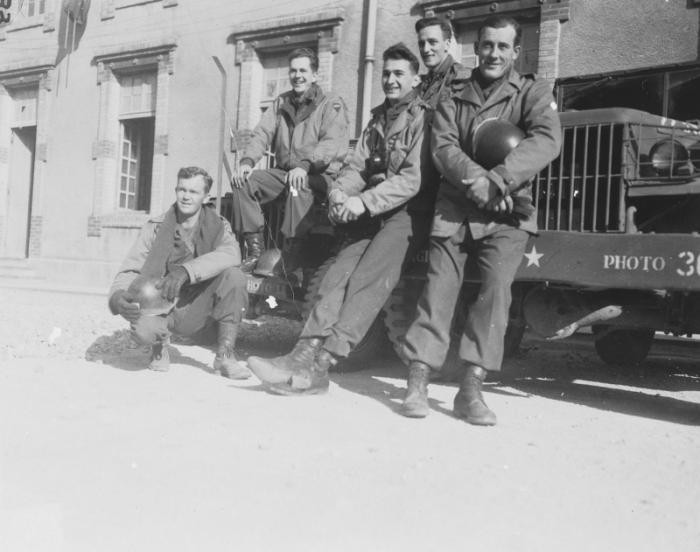
Documenting Liberation: J Malan Heslop
J Malan Heslop was among the first Allied photographers in the Army Signal Corps to document evidence of Nazi crimes. Along with Arnold E. Samuelson, he captured the plight of surviving prisoners at Ebensee, a subcamp of the Mauthausen concentration camp in Austria.
Born in 1923, J Malan Heslop served as a freelance photographer in his native Utah before setting off to California, where he studied the craft at Los Angeles City College.
Following America's entry into World War II, he joined the National Guard with hopes of being recruited for the US Army Signal Corps. In October 1942, Heslop was assigned to the 167th Signal Corps unit and sent for training to Paramount Studios in Hollywood. Three months after D-Day (June 6, 1944), he landed on the Normandy beaches and served in France. During the German counteroffensive into the Ardennes, he covered the Battle of the Bulge (December 1944).
In March 1945, Heslop joined Lt. Arnold E. Samuelson's 123rd Signal Company, which was attached initially to the 9th Armored Division and later to the 80th Infantry Division. In May 1945, he was among the first American photographers to document evidence of Nazi crimes and the plight of surviving prisoners at Ebensee, a subcamp of the Mauthausen concentration camp in Austria.

Critical Thinking Questions
- Why do military forces document their actions? Investigate Nazi documentation of actions by their military.
- Learn about documentation of genocidal events since the Holocaust. How was this evidence used, if at all?






